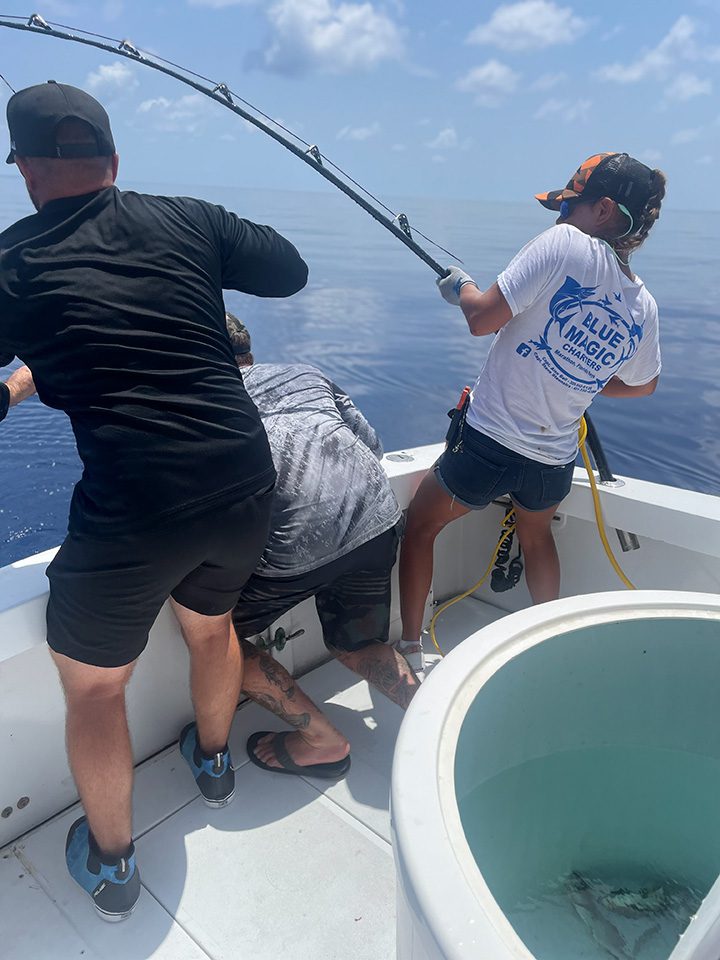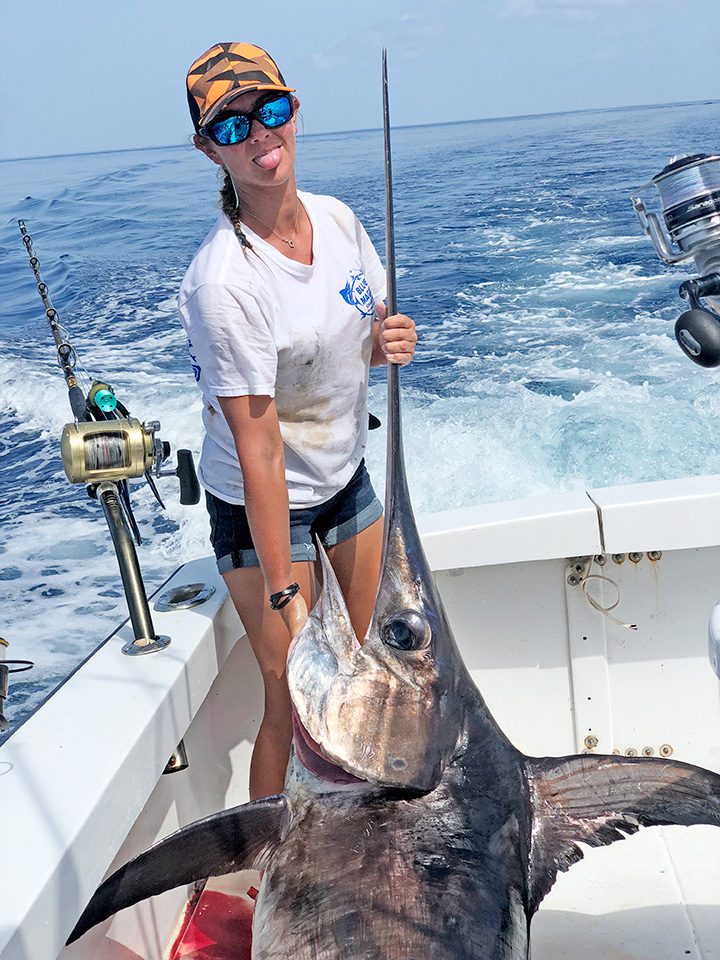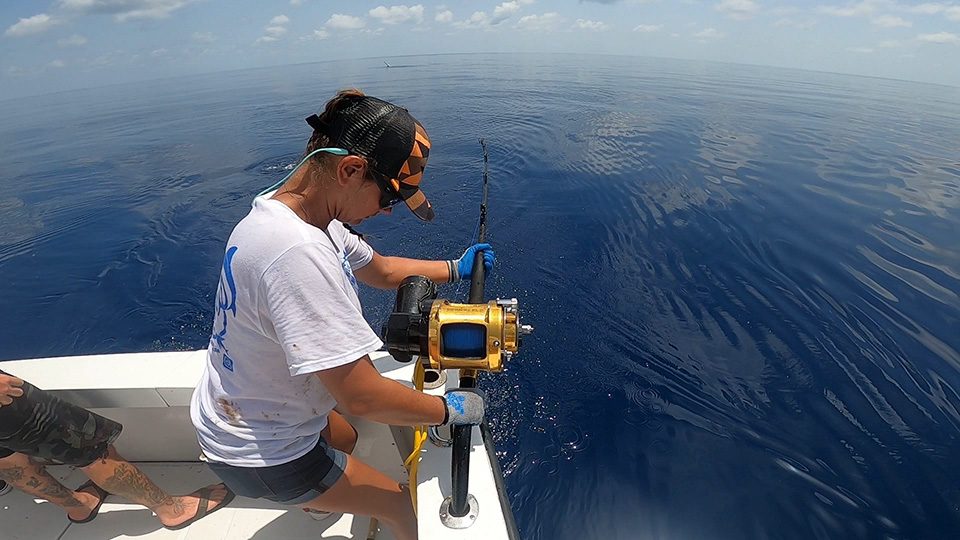Within the last decade, swordfishing has steadily evolved from being exclusively a nighttime pursuit into a round-the-clock affair. The ongoing pioneering of daytime swordfishing techniques leaves room for experimentation to perfect personal preferences within this art.
A lot of work goes into going after just a single bite, and many variables are at play fishing in 1,000 to 2,000 feet. Then, factoring in tackle, crew and the inconsistent bite style of these fish, the best way to figure out daytime swordfishing is to go do it.
Although you might see little sport in utilizing an electric reel, this type of fishing requires an incredible amount of teamwork. There’s always a job for everyone on the boat. Good communication is essential, not only to land fish, but also just to set the bait correctly.
Rigging a bait for swordfish is more satisfying than buying one pre-rigged. It’s a chance to flex your creativity and experiment with different styles and baits. After all, you want more than one bait on-hand during a sword trip.
Whether you go with the tried-and-true squid bait or hardier mahi- or bonita-belly strips, the most important factor is whether or not the bait spins. If it spins on the surface, it will spin worse at the bottom, and it must be modified or scrapped.
Personally, I like a glow-in-the-dark squid skirt on any bait, not just for added movement and visual enhancement, but the skirt also streamlines the bait and compensates for rigging errors. Once you’ve sewn the bait, slowly troll it behind the boat to check for spinning.
If your Franken-bait is straight as an arrow on the surface, send it on down. Affix breakaway lights along the wind-on leader near the bait. About 100 feet up the leader, use rigging floss to create a loop where the clip for the weight will attach to the main line. The clip is attached to about 30 feet of lighter leader, in the 50-pound range, that is then affixed to a weight.
Adjust weight to the current. A reasonable go-to is 10 pounds. Again, ensure you have extra weights on board before investing in a sword trip. The last thing you want is to get revved up over a bite, come up without a weight and have to scavenge a tool box for your heaviest wrenches to toss overboard.
There are a few different styles of driving the boat for swordfishing that have proven successful. Regardless of the method you chose, the idea is to keep the weight from free falling and tangling the line. Keep tension on the line while it is going down, take up the slack, and relocate the bottom. Come up off the bottom 100 feet, or so, and continue that process as you drift over varied depths.
Keep eyes on the rod tip the entire time, and find the happy medium between not blinking and not losing your mind. Swordfish might swipe the bait before committing to the hook, or they might hammer it. Sometimes they just start swimming to the surface with it. All the different bites look different on the rod tip. You might see the rod bounce with taps, get heavy and not bounce at all, or just completely go slack. Whether the bite is obvious or subtle, setting the hook or knowing when to reel up to check the bait is a matter of experience.
Swordfish are counted like tarpon, where the overall bite count is included along with those landed. Don’t even bother fishing for swords if you don’t have patience or enough love of fishing to be okay with coming home skunked.
It’s all hands on deck boating one of these very aggressive, potentially large fish. If you’re lucky enough to get a swordfish to the boat, you’ll find out very quickly which friends to invite back on the next trip. While the captain remains behind the wheel, ideally someone will be on the rod with another person unclipping the weight and pulling off the breakaway lights as the leader gets to the boat. Once all that gear has been removed, there is the matter of hand-leadering the fish, gaffing it, potential use of tail rope, and heaving that sucker into the boat.
There are many ways to go about this, and many ways the fish could react. Swordfish are well known for stamina and can be quite dangerous to green gaff. Be prepared for the fish to get a second wind boatside. This is where communication and teamwork can make or break the experience.
Go into a swordfish trip with everything you’ve got, but with the intent to relax and hang out. You might sit there all day without a bite, so bring people you enjoy the company of, and leave the “I’m-so-bored” guy at the dock. He is worse than bananas, anyway.
Capt. Quinlyn Haddon fishes with Blue Magic
Charters out of Marathon, Fla. Check her out her Instagram @CaptainQuinlyn, her website CaptainQuinlyn.com, or call (504) 920-6342.




